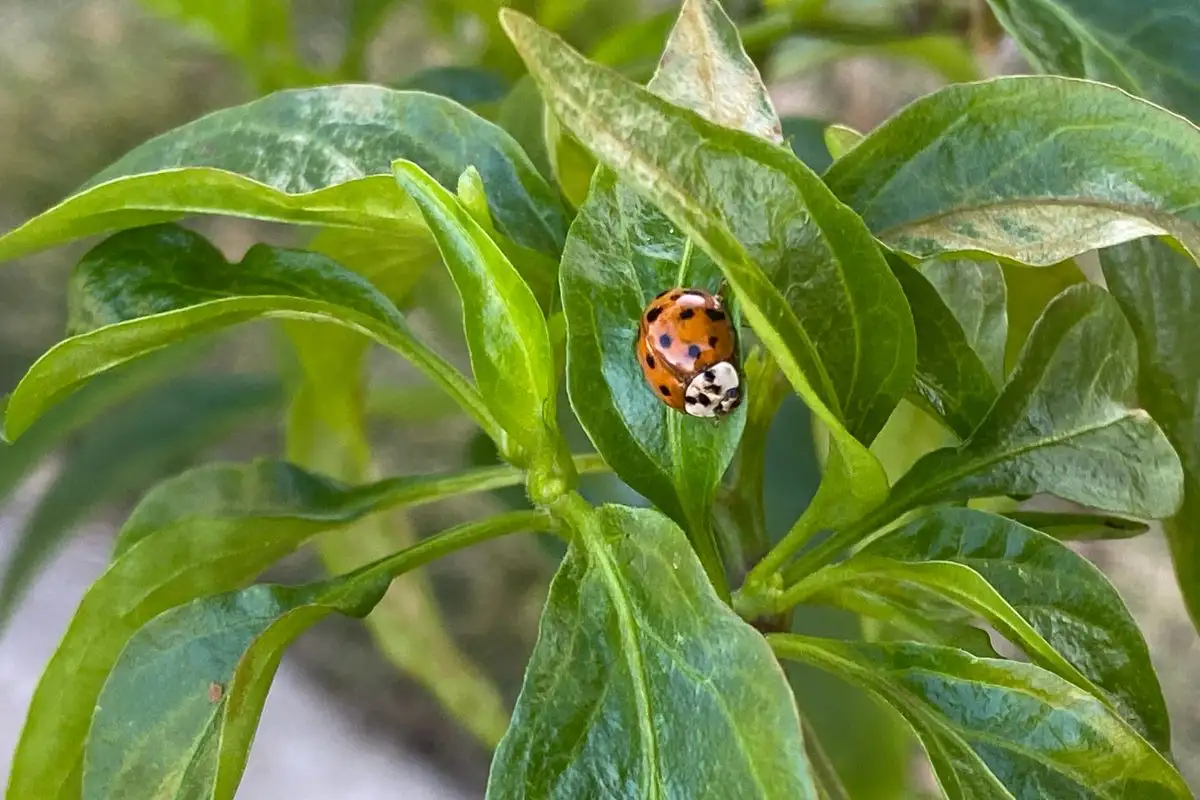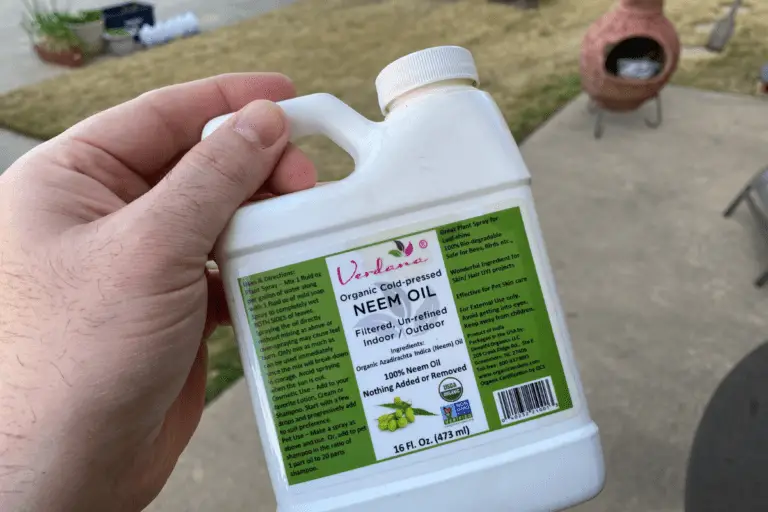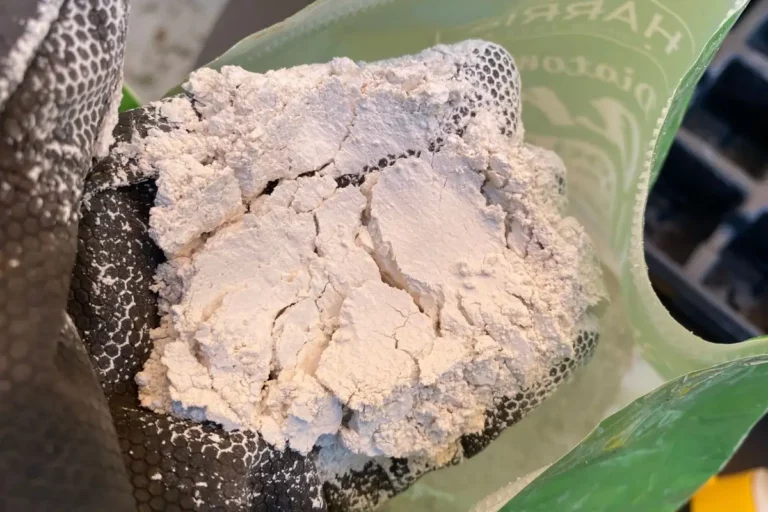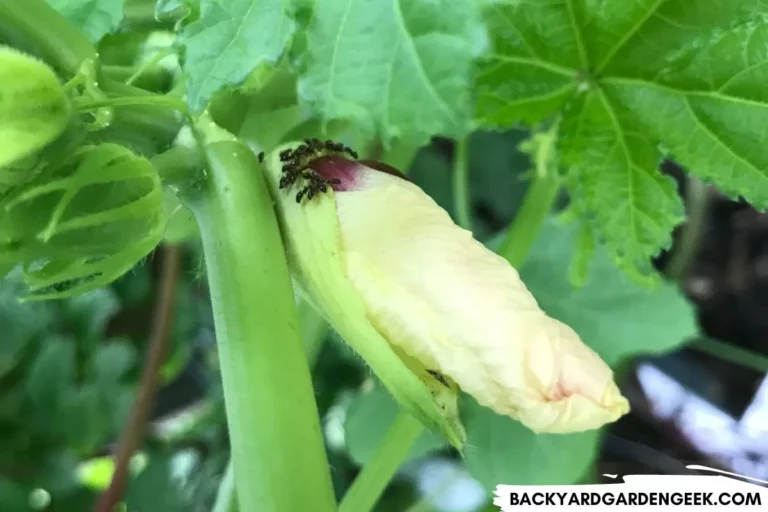Diatomaceous Earth and Ladybugs: Will DE Kill Them?
I love finding ladybugs in my garden. Also known as ladybirds or lady beetles, ladybugs are voracious beneficial bugs that’ll snack on pesky aphids and scale insects, thus helping your plants withstand infestations.
These small, colorful insects play a vital role in natural pest control, making them a valuable asset for your garden.
However, if you’ve faced an infestation that requires the use of diatomaceous earth (DE), you might have wondered: Will diatomaceous earth kill ladybugs?
Generally speaking, diatomaceous earth will kill ladybugs if it’s sprayed directly on them or if they happen to wander across its powdery surface. Despite its flour-like feel, DE is a microscopically abrasive substance that’ll cut insect exoskeletons, causing dehydration and eventual death.
In this article, I’ll give a quick overview of the following:
- why exactly DE can harm or kill ladybugs.
- how to use DE safely in your garden, minimizing its potential impact on your ladybug population.
- natural ways to keep ladybugs out of your house and in your garden, thus minimizing the need for chemical treatments.
- a list of bugs that DE will not work very well against.
If you’ve never used DE before, please read my articles on using diatomaceous earth safely in your garden and wearing masks while applying diatomaceous earth. Those will help you learn the basics of applying DE safely.
Does Diatomaceous Earth Kill Ladybugs? Things to Consider
Made from the fossilized remains of microscopic organisms known as diatoms, diatomaceous earth works because diatoms have silica-based cellular structures (a truly unique phenomenon!).
When diatoms are crushed into a powdery substance, that DE feels soft to the touch and is harmless to humans and their furry friends, but it’ll be quite the opposite for tiny insects.
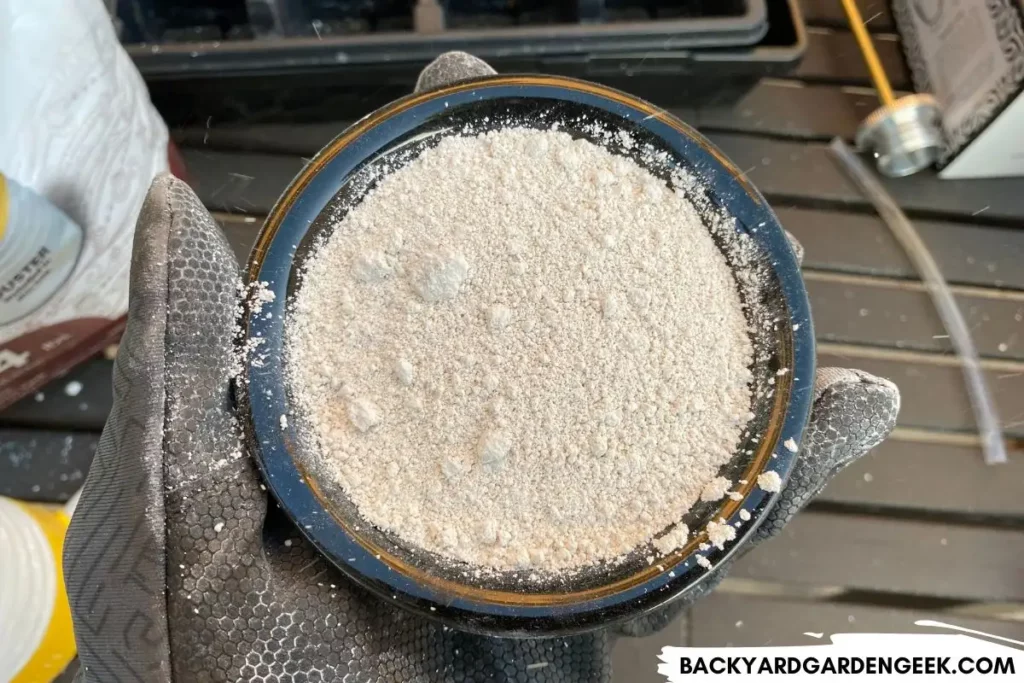
For them, it’ll be like walking across shards of glass…except that the glass is also highly absorbent. Any moisture on their bodies—whether that’s water, oils, or fats—will be quickly absorbed by the DE, leaving the insect without the protection that those moistures provided.
To understand the impact of DE on ladybugs, let’s consider a few key points.
First, DE is most effective when applied directly to pests or their pathways. Ladybugs, being beneficial insects, are not typically the target of pest control measures, but they like to hang out in and around pests, especially aphids.
If you’ve got infestations in your garden, you’ll want to examine your plants closely and use DE selectively, avoiding applying it directly on areas where ladybugs might be actively feeding.
Another factor to consider is the timing of your DE application. Ladybugs are more active when aphids are present and are typically at their best during daylight hours.
To minimize the potential impact on ladybugs, apply DE early in the morning or late in the evening when ladybugs are less likely to be active.
I prefer late afternoon applications since the available sunlight helps me spot-check my plants for ladybugs before I spray any DE on them.
Ultimately, you’ll often need to strike a balance between pest control and preserving beneficial insects in your garden.

I never want to injure ladybugs, but there are times when my aphid infestations have gotten so bad I had no choice but to intervene with either DE or soapy water and neem oil treatments.
If you’d like to know more about what I do with soapy water and neem oil when aphids show up in my garden, you might like these articles:
- 6 Aphid-Eating Bugs + Tips to Keep Them in Your Garden
- 11 Destructive Ways That Aphids Harm Plants
- Can You See Aphids on Plants? Spotting Early Infestations
- Do Aphids Attract Ants?
- Will Aphids Die in Winter? 5 Things You Need to Know
- Will Aphids Go Away on Their Own? 9 Things to Know
In the sections below, I’ll explore strategies to avoid harming ladybugs when using diatomaceous earth, as well as alternative methods to address ladybug infestations in the house.
How Do I Avoid Killing Ladybugs with Diatomaceous Earth?
As you already know, ladybugs are valuable allies in the garden since they help control aphids and other destructive pests naturally.
To protect these beneficial insects while using diatomaceous earth for pest control, consider the following strategies:
| Spot-Check Plants Carefully | Before applying DE to any infested plants, inspect them closely. Do you see any ladybugs anywhere, including ladybug eggs or larvae? If not, go for it! |
| Target Your Applications | Instead of applying DE liberally across your entire garden, focus on areas where pest activity is high. By using a targeted approach, you can minimize the chances of ladybugs coming into direct contact with the substance. |
| Avoiding Direct Contact | When applying DE, be mindful of ladybug presence. Avoid directly dusting ladybugs or areas where they’re congregating. |
| Time Your Applications | Consider the timing of diatomaceous earth application. Apply it early in the morning or late in the evening when ladybugs are less active. This will allow the DE powder to settle and stick to plants before ladybugs become active again. |
| Postpone Your Applications | There might be times when you need to postpone your DE application because there are too many ladybugs present. In that case, don’t apply DE to your plants. Be patient and wait. If the infestation grows worse, however, you might have to act regardless of ladybug activity. |
Ladybugs are beneficial insects that contribute to the overall health of your garden ecosystem, so you’ll want to take measures to avoid harming them while using DE. This’ll help you maintain a balanced and thriving garden ecosystem.
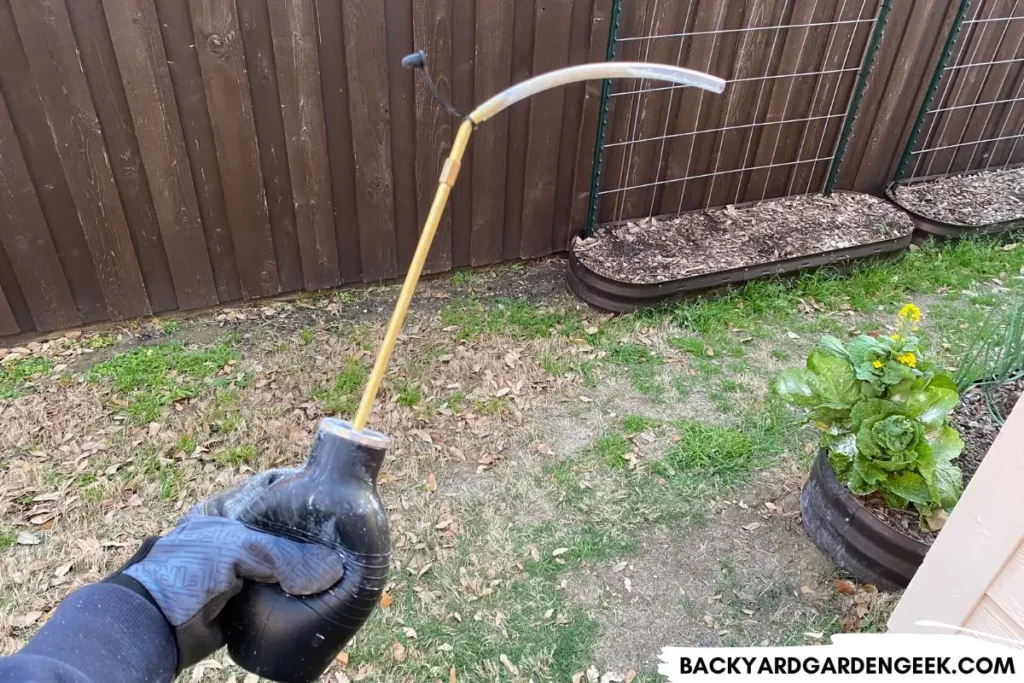
How Do I Get Rid of Ladybugs in My House?
Several years ago—for reasons I still can’t fathom—I found a ton of ladybugs in my upstairs bedroom.
They were gathered all over the outside window, and several dozen had crawled into the bedroom through cracks between the window pane and the frame (it was an older home, and my wife and I were renting it at the time).
While ladybugs are beneficial in the garden, having them inside my house was a major nuisance.
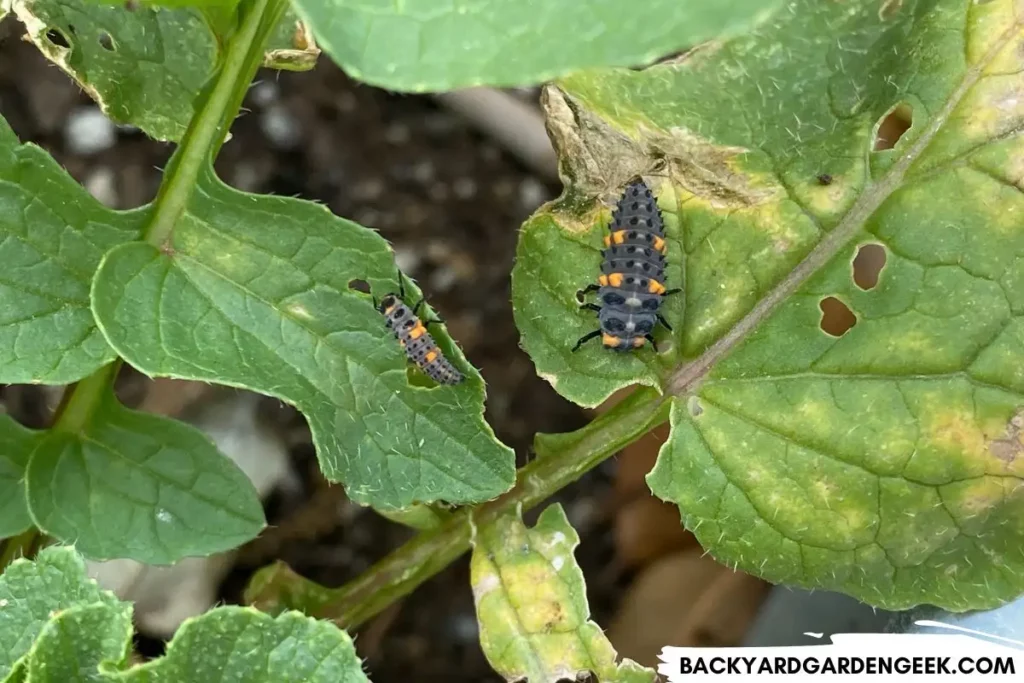
If this ever happens to you, here are some effective and garden-friendly methods to remove ladybugs from indoor spaces:
Cup and Paper Removal: If you spot ladybugs indoors, gently capture them using cup and a piece of paper and release them outside. Just place the cup over them, then slowly slide the paper underneath the cup to trap them inside it. Walk outside with your cup and remove the paper. You can then encourage the ladybugs to scoot into your garden.
Vacuuming: If you have a relatively gentle handheld vacuum cleaner, you can collect ladybugs from walls, ceilings, or other surfaces that way, then empty the canister outside to release the ladybugs safely. I’ve done this many times with all kinds of bugs, and you’d be surprised how many insects do just fine even when sucked up with a handheld vacuum!
Light Traps: Ladybugs are attracted to light sources. Place a small lamp or light trap near a window at night, and the ladybugs might be drawn to it. Once they gather around the light, you can easily capture and release them outside.
Prevention: Prevent ladybugs from entering your house by sealing cracks, gaps, and openings in around doors, windows, and utility pipes. Installing weatherstripping and door sweeps can help keep ladybugs out as well. Obviously, they don’t help you inside your house. You need them in your garden!
Natural Repellents: Ladybugs are deterred by certain smells. Using natural repellents like citrus-scented or vinegar sprays around your home’s perimeter can discourage them from entering your house.
If you find ladybugs indoors, you’re probably seeing them there because they’re looking for shelter. This is a temporary thing, so don’t worry too much about it.
When you take preventive measures and using gentle removal techniques—not to mention providing plenty of garden plants for them to visit—you can help manage ladybug populations in your house without causing harm.
What Bugs Does Diatomaceous Earth Not Harm or Kill?
Diatomaceous earth is known for effectively controlling a wide range of insect pests. However, certain insects aren’t really impacted by DE, so it’s helpful to know which bugs dislike DE and which aren’t really all that bothered by it.
Here’s a list of insects that may have varying levels of resistance or limited susceptibility to diatomaceous earth:
| Flying Insects | DE is primarily effective against crawling insects, as it relies on physical contact to cause damage. Flying insects such as flies, gnats, and mosquitoes are much less susceptible to the abrasive effects of DE due to their airborne nature. |
| Insects with Protective Coverings | Some insects (especially in their adult stage) possess protective coverings that provide an additional layer of defense against DE. For instance, adult beetles, leaf-footed bugs, squash bugs, stink bugs, and weevils have hard shells or waxy coatings that can reduce the impact of DE. |
| Hidden or Underground Pests | DE requires direct contact with insects to be effective. Therefore, pests that primarily reside within the soil, such as root maggots, nematodes, or underground-dwelling ants, may not be all that impacted by DE. |
| Pests That Reproduce Rapidly | Insects with high reproductive rates, such as aphids or spider mites, may be challenging to control solely with DE. These pests reproduce quickly, and their populations can rebound faster than DE can eliminate them. |
If you’re dealing with rapidly-reproducing pests (aphids and spider mites in particular), I recommend a two-prong approach that combines soapy water or neem oil sprays alongside DE.
Check out these related articles to learn more:
- 9 Reasons Your Neem Oil Might Not Be Working
- 12 Reasons Why Aphids Keep Coming Back + 3 Simple Fixes
- 21 Plants That Aphids Love to Attack + How to Stop Them
- Using Neem Oil to Kill Spider Mites: A Complete Guide
- What Bugs Does Neem Oil Repel and Get Rid Of?
- Will Neem Oil Kill Ladybugs? Here’s What You Need to Know
Here’s a list of insects that may have varying levels of resistance or limited susceptibility to diatomaceous earth:
- Ants (just focus on fire ants or leafcutter ants)
- Aphids
- Beetles (especially the larger, more mature varieties)
- Flies
- Mealybugs
- Mosquitoes
- Nematodes
- Shield Bugs
- Slugs
- Snails
- Spider Mites
- Stink Bugs
- Wasps
- Weevils
- Whiteflies
While DE may have some limited efficacy against the above insects, please note that its effectiveness can still vary depending on factors such as application method, environmental conditions, and bug maturity.
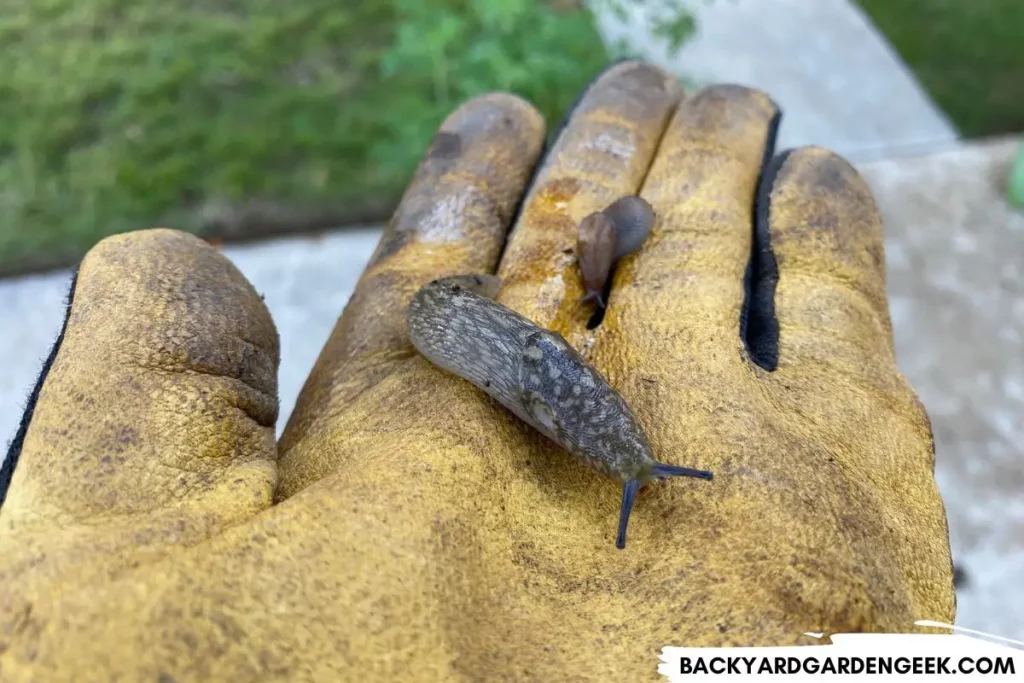
I always advise following product instructions and consider integrated pest management strategies—that use soapy water and neem oil sprays to complement DE—for comprehensive pest control.
Long story short, diatomaceous earth is a versatile and natural pest control option that can effectively target a wide range of crawling insects. However, when it comes to ladybugs, cautious and selective use is necessary to avoid harming these beneficial insects.
By closely inspecting your plants, targeting your applications, and applying DE at the right time of day, you can minimize its potential impact on ladybugs while still benefiting from its natural pest-control properties.
Further Reading
If you’d like to learn more about DE and other natural ways to control pests in your garden, you might be interested in these articles:
- 5 Reasons to Mix Diatomaceous Earth with Soil
- Can Diatomaceous Earth Harm Plants? What Scientists Say
- Can You Put Too Much Diatomaceous Earth on Plants?
- Diatomaceous Earth vs. Neem Oil: Which Should You Use?
- Using Diatomaceous Earth: Do I Need to Wear a Mask?
- Using Diatomaceous Earth as a Fertilizer: Will DE Help?
